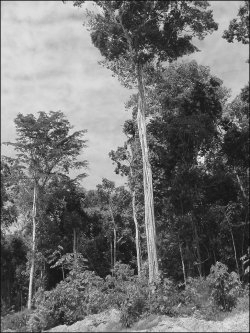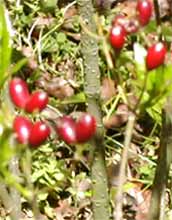Cancer Cure with Herbal Remedies?
Would you be interested in harvesting health? Cultivating plants whose natural compounds are cancer fighters…if this sounds interesting to you, please read on…
Massive amounts of synthetic chemicals have been introduced in the past 50 years. Examinations of over 85,000 of these chemicals and their health effects are currently being conducted, but will probably take decades or even years to come to a conclusion. Very little information is available to the public about the toxicity of the majority of the highly produced chemicals, which includes nearly 3,000 of them, according to a report titled “What is the Connection Between Chemicals and Breast Cancer?”
One well known carcinogen, Benzene, is an example of an exponentially formulated chemical that’s derived from petroleum or natural gas - 125 million gallons of it were produced in 1940; 410 million gallons in 1955; and 1.5 billion gallons in 1976! The use of this chemical was finally regulated in 1977.
For a very long time, the link between cancer and chemicals wasn’t talked about – you could say it was “taboo” to talk about it. That’s because those who “contaminated” would have to face their responsibilities and there wasn’t much of that going on in the first half of the 20th century. Consciousness of all things “green” in the past couple of decades has caused some people to be more aware, and for some to study the link between cancer and synthetic chemicals.
From 1990 to 1995, more than 6,000,000 people died from cancer in America. In 1900, 3.7% of all deaths were cancer related; in 1940, 11.2% of all deaths were cancer related; in 2001, 23% of all deaths in the United States were cancer related. One male out of two and one female out of three will develop some form of cancer in their lifetime, according to a recent National Cancer Institute statistic.
What explains this trend?
One relevant factor is a population that is increasingly getting old. Most people have heard, most cancers (around 75%, actually) affect people over 55 years old. As we age, our natural immunity weakens, thereby allowing for a lifetime of carcinogenic chemicals to further propel cell destabilization – it’s hard to avoid because these chemicals that have the propensity to be carcinogenic are in our lives one way or another on a daily basis.
In 1971, the year I was born, the “War on Cancer” was also born from the National Cancer Act. Many resources were put into it but its focus was about finding a cure, not so much on prevention. Its focus was more on the possibility of curing cancers with the use of chemotherapy. Have we lost the war on cancer?
Guy Faguet, M.D. wrote a book called The War on Cancer in 1995 wherein he states: “…an objective analysis of cancer chemotherapy outcomes over the last three decades reveals that, despite vast human and financial expenditures, the cell-killing paradigm has failed to achieve its objective, the former rallying phrase ‘War on Cancer’ has been abandoned by the NCI [National Cancer Institute], and the conquest of cancer remains a distant goal. Moreover, as long as the use of inefficacious but toxic drugs is justified by the exigencies of the cell-kill paradigm, a model based on flawed premises with an unattainable goal, cytotoxic chemotherapy in its present form will never eradicate cancer nor alleviate suffering.”
What can you do to be proactive and reduce your cancer risk?
Get informed. Know what your environmental risks are. Make conscious choices to avoid those risks and discover a holistic way of life. There’s already been so much damage to our planet, and in turn to our bodies, that starting a holistic lifestyle now may not even be sufficient.
It is now known that a mutation to DNA is what causes the difference between normal and cancer DNA. The late Dr. Mirko Beljanski, a biochemist who worked at the famous Pasteur Institute in Paris for over 30 years, knew that carcinogens increased the duplication of cancer cells, and he sought natural molecules that would do the opposite – slow down the Cancer DNA fusion. He studied several hundred compounds and found a small amount that seemed to reduce that synthesis. Two of these compounds became the main focus of his research, and they were exposed to a lot of testing to see how they affected cancer cells. To cancer cells in mice, they were toxic, while not harming the mice that did not have cancer.
Unfortunately, mainstream industry was not interested in the development and production of natural molecules because it didn’t make money. The industry is only interested in developing something that it can patent, and that is much more easily accomplished with something synthetic rather than natural.


Dr. Aaron Katz's cancer research:
Fortunately, Dr. Aaron Katz, the Director of the Columbia University Center for Holistic Urology, did take interest in Dr. Beljanski’s findings and proceeded to conduct studies on these natural compounds that confirmed anticancer activity in prostate cancer cells. The extracts are Rauwolfia vomitoria and Pao Pereira (Geissospermum Laeve). The study of the later is still currently underway.
Dr. Katz’s experiments showed that the two compounds, although distinct, their anti-prostate cancer actions overlap, thus supporting the concept to combine the two – called Prostabel – and begin a new clinical trial in men with elevated PSA levels, which means that they are at a higher risk of developing prostate cancer. Although this clinical trial is still underway, the results thus far are reported to be very encouraging. The best part is that because these compounds function at the level of the DNA, they are not tumor-specific. What that means is that they could potentially be effective in a wide range of cancers!
This was started by harvesting compounds from some exotic plants (by Dr. Beljanski) – who’s to say that this type of research can’t be applied to other plants which can be easily cultivated. Harvesting Health is the idea behind the Beljanski Foundation, which is a US Based non-profit organization created to further these types of breakthroughs and to educate the public to take charge for the protection of our environment and ourselves.









